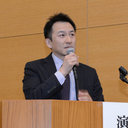Pilot study of transcatheter arterial chemoembolization with degradable starch microspheres in patients with hepatocellular carcinoma.
Palabras clave
Abstracto
We prospectively evaluated the efficacy and safety of transcatheter arterial chemoembolization (TACE) with microembolization material, degradable starch microspheres (DSMs), and epirubicin, for treatment of multifocal hepatocellular carcinoma (HCC). Seventeen patients with multifocal HCC were treated. At the first treatment, DSMs were injected alone to determine the dose for embolization of the hepatic artery in each patient. After 4 weeks, TACE was performed every 4 to 6 weeks with a mixture of DSMs and epirubicin at a dose of 40 mg/m2. A necrotic area of more than 50% was produced in 6 patients by DSMs alone, and in 11 patients by TACE. The overall response rate was 52.9% (2 complete and 7 partial responses). The duration of the responses ranged from 4 to 21 months (median: 9 months). Common toxicities were transient abdominal pain, nausea/vomiting, fever, and leukopenia. In four patients, grade III or IV toxicity was observed as gamma-glutamyl transpeptidase elevation. TACE with DSMs had tumor necrosis efficacy with acceptable toxicity. The median survival time was 21.7 months, and the 2-year survival rate was 45.3%. Further investigation of the effects of DSM treatment on survival should be carried out.


